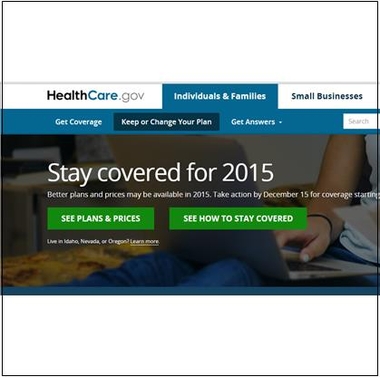Facing health law hikes, consumers mull options

Washington (AP) — Consumers across most of America will see their health insurance premiums go up next year for popular plans under President Barack Obama's health care law.
But it will take time for families to figure out the best bang for their budgets — even as a bigger political battle brews over the program's future.
For many people, government subsidies will cushion the hit. And there's a new factor: Returning customers who are savvy about health insurance and prepared to shop for a better deal.
Scott Joens of St. George, Utah, said he and his wife are facing premium increases of about 18 percent for 2015. But instead of agonizing, he's looking for a plan with a higher deductible, which is the amount of medical expenses that consumers are responsible for each year before insurance kicks in. By switching, he could lower his monthly premiums.
Joens, in his 50s and semi-retired from the pharmacy business, said he'll worry if the trend keeps going.
"It's not a major hardship," he said. "But I still have some years until I am on Medicare. My worry is by the time I'm 65, who knows where this will be?" Overall, he said he's been very satisfied with his "gold" plan this year.
Experts say numbers alone don't tell the story.
"How all this shakes out will depend on one big wild card," said Larry Levitt of the nonpartisan Kaiser Family Foundation. "Will current enrollees become savvy shoppers or just sit back and stay in their current plans? This is a new program with no precedent, so there's no way to predict exactly what will happen."
In a departure from the process that officials followed last year, the administration has not released its own analysis of 2015 premiums. Instead, it published raw data, leaving it to independent experts to parse the numbers.
What they are finding points to an overall trend of rising premiums, although not everywhere.
The analysts have focused on "silver" plans, the coverage level picked by about two-thirds of the customers on HealthCare.gov and state-run health insurance markets. There are four levels — platinum, gold, silver and bronze. Silver is a notch below what most people with employer coverage have.
A study from the market analysis firm Avalere Health found that premiums for the lowest-cost silver plan will go up by 10 percent on average in communities across the country.
A Kaiser Foundation study took a different approach, focusing on premiums for the second-lowest-cost silver plan in every county. That type of plan is a benchmark that the government uses as a basis for setting consumer premium subsidies for the entire program.
Kaiser found that premiums for the second-lowest-cost silver plan are going up in 59 percent of counties nationwide, down in 34 percent, and remaining flat in 7 percent. Eighteen percent of counties will see an increase of more than 10 percent. At the other end of the spectrum, 13 percent of counties will see a decrease of more than 10 percent.
If you are currently in the second-lowest-cost silver plan in your community, there's no guarantee that will be the case for 2015. Another insurer may have bid lower and captured the designation. People who don't shop around could face significant price increases.
The rise isn't too far out of line with what's happening to employer-sponsored plans, which cover about 150 million people and make up the biggest chunk of the health-insurance market. Costs in those plans, which usually are more restrained than prices in the individual market, are expected to rise about 4.6 percent on average next year, according to a recent survey from benefits consultant Mercer.
Still, Levitt said many consumers will have the opportunity to find a lower-cost plan.
"In some places, premiums are actually going down, which is almost unheard of in health insurance," he said.
That's what Robert Glenn of Charleston, South Carolina, found when he started looking around. The premium for his current gold plan actually dropped by $17 for 2015. Nonetheless, Glenn re-evaluated his options, figuring he would save more next year by picking a middle-of-the-road silver plan instead. His new monthly premium will be $104 less than what he is currently paying.
"I see the forces of capitalism and competition working this year," said Glenn, a psychiatrist in his early 30s who's an independent contractor. "I know I am just but one of millions of people affected ... but 'Obamacare' is working for me."
Kaiser's analysis found wide differences from state to state, and even within states. Some of the steepest premium increases for benchmark plans are for counties in Alaska and Minnesota. Most counties in Georgia will see decreases. Premiums are trending up in Florida and Texas, prime targets of the administration's enrollment drive for 2015.
Stephanie Baechle, a nanny from Columbia, Mo., says she's not happy. Although she's in her 20s — a desirable demographic for insurers— market forces seem to be pushing more costs at her.
Her current plan is being canceled. The alternative she's being offered costs $15 a month more, and the copay is higher. On top of that, her doctor is not in the new plan.
"As a supporter of the Affordable Care Act, I am extremely disappointed in what is happening," said Baechle, who said she's considering not signing up for insurance and instead paying the fine levied against those who go uncovered.
___
By Ricardo Alonso-Zaldivar, Associated Press. Associated Press writer Tom Murphy in Indianapolis contributed to this story. Copyright 2014 The Associated Press. All rights reserved. This material may not be published, broadcast, rewritten or redistributed.
The Gayly – November 25, 2014 @ 11:50am





